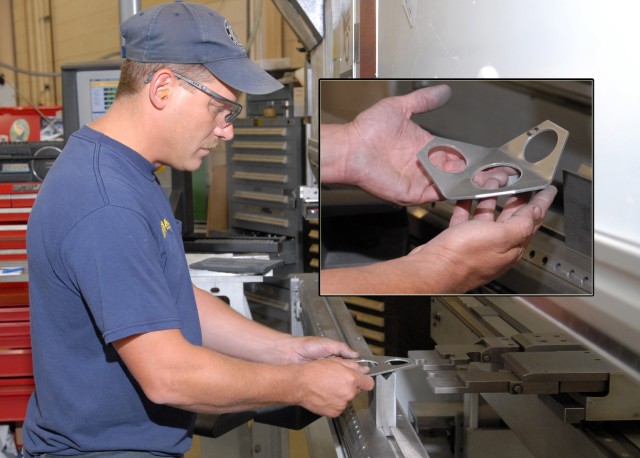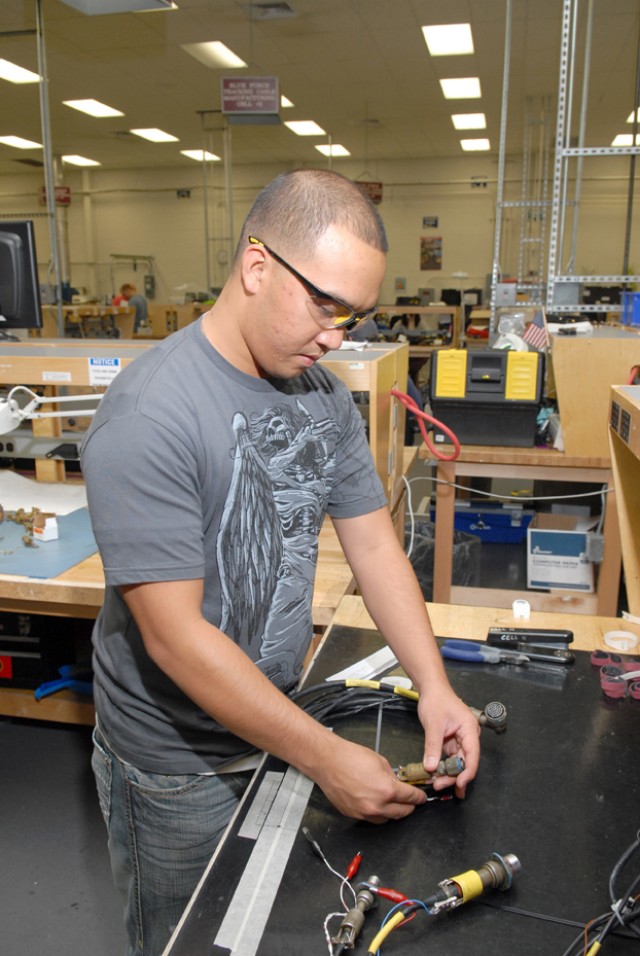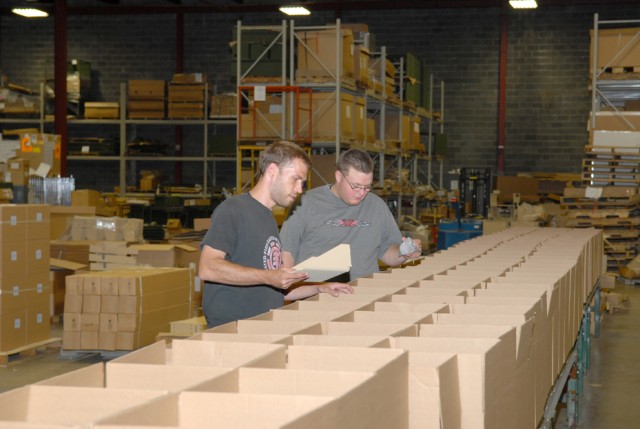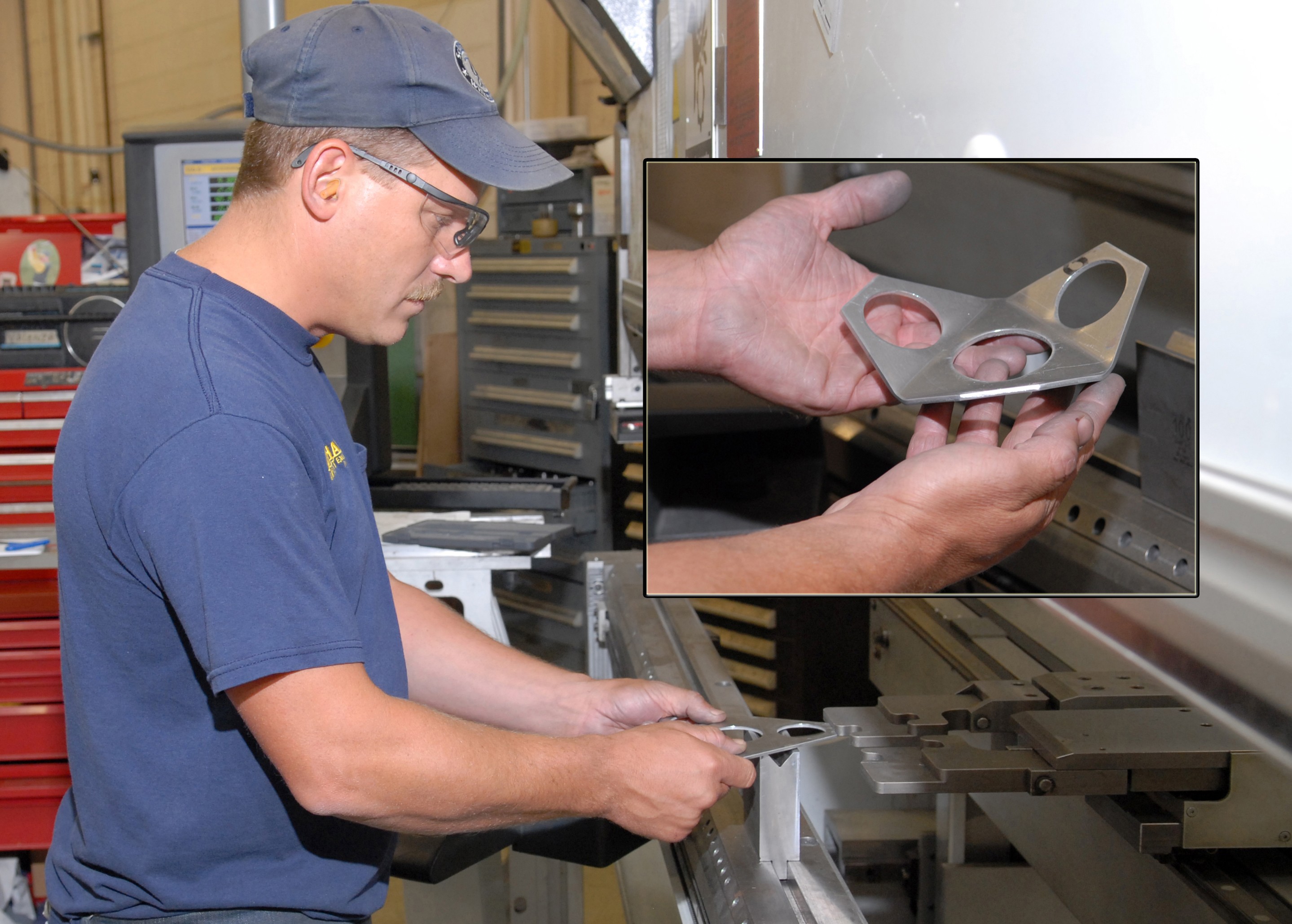TOBYHANNA ARMY DEPOT, Pa. - Tobyhanna's workload on a key tracking system has reached new heights in support of warfighters around the world.
As of August, technicians here produced more than 100,600 Blue Force Tracking (BFT) installation kits for military vehicles, while doubling the number of configurations to accommodate an expanding customer base that includes the Navy, Air Force, Army and Marines.
"We couldn't have reached this milestone without the dedication of the employees in the shops around the depot," said Tracy Kraftchisin, Manufacturing System and Support Branch chief. "From past to present, this effort has transitioned through various branches and is still going strong." Tobyhanna ships thousands of BFT installation kits each month.
The depot's role includes design and manufacturing of the BFT kits by personnel in Production Engineering, Systems Integration and Support (SIS) and Production Management directorates. The design phase of the mission started in 2001 and technicians in the Electronics Fabrication Support Branch began assembling and installing the kits in 2002. Technicians produced more than 50,000 kits for the Army and Marine Corps by October 2007.
BFT provides situational awareness and helps reduce the risk of fratricide. Members of the armed forces use the system to track combat operations in the field via maps displayed on video monitors. The system also pinpoints the location of other BFT-equipped units and field commanders can observe the same data to maneuver units to more strategic or safer positions. Communications are maintained through radio and e-mail sent by a satellite, which also provides global positioning information.
BFT is composed of computers using Force XXI Battle Command Brigade-and-Below software, video monitors, position location ground radios and satellite antennas.
Hundreds of depot employees produce several different BFT installation kits for shelters, humvees, trucks, Stryker vehicles and the MRAP (Mine Resistant Ambush Protected) vehicles.
The kits include a switchbox, cables, brackets, mounts and other associated hardware.
"Employees have hit just about every goal we've set for them," said Julius Ceriani, a mechanical engineer in Production Engineering's Design and Development Branch.
Ceriani oversees the mechanical fabrication of BFT items such as antenna brackets and mounting hardware. "Kits are tailored to each vehicle and we've worked hard to keep the process as seamless as possible," he said, referring to continuous changes necessary to mount the BFT on different vehicles.
"We produce kits for 20-25 vehicle platforms," said John Kalenak, production controller, Production Management Directorate. "Our goal is to have every [military] vehicle outfitted with our equipment." Kalenak works in the Manufacturing Scheduling Division.
Kraftchisin mentioned that in the beginning the program boasted only 10-12 configurations.
"We've doubled our numbers since then," she said.
"As each new vehicle comes out, our teams will work with the manufacturer to design the installation kits," said Michael Fisher, Industrial Services Division chief. "Each kit will have enough hardware, pieces and parts to completely assemble one kit per vehicle. Whoever does the installation in the field will have everything needed in the box."
Program officials believe the success of the BFT program is a result of the support received from organizations throughout the depot.
"Everyone who works on the BFT does an outstanding job," said Vic Narsavage, Tactical Communications Facilities Branch chief.
According to Narsavage, technicians in his branch work three shifts fabricating and testing different cable assemblies. "We're able to produce thousands of cables each week to satisfy requirements," he said, explaining that each kit contains three cables.
Other components such as mounting brackets are prepared by branches in the Industrial Services Division, Fisher said.
The Sheet Metal Fabrication Branch and the Machining Branch manufacture metal subcomponents from raw stock. These sub components move into the Welding Branch, where they are joined into unfinished components, according to Fisher.
The next step is taken at the Industrial Operations Facility (IOF) where the components are etched and painted or plated. Once through the IOF, the raw stock has completed its transformation to a complete item ready for installation, Fisher explained.
All components and parts purchased or manufactured here are routed to the Assembly Branch. The Assembly Branch assembles these items into the final product.
Other organizations that support the program include Contracting and the Defense Logistics Agency.
"Every organization on the depot has a hand in this accomplishment," Fisher said, adding that SIS organizations have played a vital role in the success of the program.
"The (cable fabrication) processes developed by Joe Healey's branch [Electronics Fabrication Support] during the initial production positioned the depot for future successes."
Tobyhanna Army Depot is the Defense Department's largest center for the repair, overhaul and fabrication of a wide variety of electronics systems and components, from tactical field radios to the ground terminals for the defense satellite communications network. Tobyhanna's missions support all branches of the Armed Forces.
About 5,600 personnel are employed at Tobyhanna, which is located in the Pocono Mountains of northeastern Pennsylvania.
Tobyhanna Army Depot is part of the U.S. Army CECOM Life Cycle Management Command. Headquartered at Fort Monmouth, N.J., the command's mission is to research, develop, acquire, field and sustain communications, command, control computer, intelligence, electronic warfare and sensors capabilities for the Armed Forces.






Social Sharing